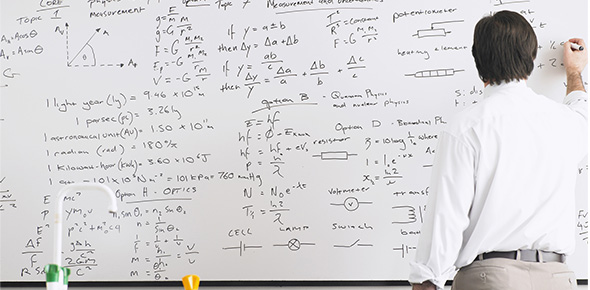Balancing Equation And Conservation Of Matter

This quiz is designed to help you master the concepts of conservation of matter and become more comfortable with balancing equations.
Questions and Answers
- 1.
What does the Law of Conservation of Matter refer to?
- A.
Matter can not be created or destroyed.
- B.
Matter can be created but can not be destroyed.
- C.
Matter can be destroyed but not created.
Correct Answer
A. Matter can not be created or destroyed.Explanation
The Law of Conservation of Matter states that matter cannot be created or destroyed. This means that in any chemical reaction or physical change, the total mass of the substances involved remains constant. The atoms and molecules may rearrange or combine in different ways, but their total mass remains the same. This principle is fundamental in chemistry and is supported by numerous experimental observations.Rate this question:
-
- 2.
What is Matter?
Correct Answer
Anything that has mass.Explanation
The correct answer explains that matter refers to anything that has mass. This means that any physical substance, whether it is solid, liquid, or gas, is considered matter. Mass is a fundamental property of matter, and it is a measure of the amount of material present in an object. Therefore, the answer accurately defines matter as anything that possesses mass, covering a broad range of substances and emphasizing the importance of mass in determining whether something is considered matter or not.Rate this question:
- 3.
What side of the equation are the reactants on?
- A.
Right
- B.
Left
- C.
Middle
- D.
Both.
Correct Answer
B. LeftExplanation
The reactants are on the left side of the equation. In a chemical equation, the reactants are the substances that undergo a chemical reaction to form new products. They are typically written on the left side of the equation, while the products are written on the right side. This is a fundamental convention in chemistry, and it helps to visually represent the process of a chemical reaction.Rate this question:
-
- 4.
What are the reactants in the following equation?H2 + O → H2O
- A.
Hydrogen
- B.
Oxygen
- C.
Water
- D.
Hydrogen and Oxygen
Correct Answer
D. Hydrogen and OxygenExplanation
The reactants in the given equation are hydrogen and oxygen. This is indicated by the presence of the chemical symbols H2 and O in the equation. These two substances combine to form water (H2O) as the product.Rate this question:
-
- 5.
How many atoms of N are in the following molecule?NH3
- A.
1
- B.
2
- C.
3
- D.
0
Correct Answer
A. 1Explanation
The molecule NH3 consists of one nitrogen atom (N) bonded to three hydrogen atoms (H). Therefore, there is only one atom of nitrogen (N) in the molecule NH3.Rate this question:
-
- 6.
How many atoms of Fe are in the following molecule?Fe2O3
- A.
0
- B.
1
- C.
2
- D.
3
Correct Answer
C. 2Explanation
The molecule Fe2O3 consists of two iron (Fe) atoms and three oxygen (O) atoms. Therefore, there are 2 atoms of Fe in the molecule.Rate this question:
-
- 7.
Is the following equation balanced? NH3 + HCl à NH4Cl (yes or no)
Correct Answer
yesExplanation
The equation NH3 + HCl → NH4Cl is balanced because there is an equal number of atoms of each element on both sides of the equation. On the left side, there is one nitrogen (N) atom, three hydrogen (H) atoms, and one chlorine (Cl) atom. On the right side, there is one nitrogen (N) atom, four hydrogen (H) atoms, and one chlorine (Cl) atom. Therefore, the equation is balanced.Rate this question:
- 8.
What are the correct coefficients needed to balance the following equation?____Al + _____ O2 à ____ Al2O3
- A.
2,3,4
- B.
1,3,2
- C.
4,3,2
- D.
4,2,3
Correct Answer
C. 4,3,2Explanation
To balance the equation, we need to ensure that the number of atoms of each element is equal on both sides. In this case, we have 1 Al atom on the left side and 2 Al atoms on the right side, so we need to multiply the coefficient of Al by 2 to balance it. Similarly, we have 2 O atoms on the left side and 3 O atoms on the right side, so we need to multiply the coefficient of O2 by 3 to balance it. Finally, we have 3 O atoms on the left side and 3 O atoms on the right side, so the coefficient of O2 is already balanced. Therefore, the correct coefficients are 4, 3, 2.Rate this question:
-
Quiz Review Timeline +
Our quizzes are rigorously reviewed, monitored and continuously updated by our expert board to maintain accuracy, relevance, and timeliness.
-
Current Version
-
Mar 21, 2023Quiz Edited by
ProProfs Editorial Team -
Mar 13, 2010Quiz Created by
Ccoop001
- Arithmetic Quizzes
- Calculus Quizzes
- Data Handling Quizzes
- Decimal Quizzes
- Discrete Mathematics Quizzes
- Fraction Quizzes
- Function Quizzes
- Geometry Quizzes
- Graph Quizzes
- Measurement Quizzes
- Number Quizzes
- Percentage Quizzes
- Place Value Quizzes
- Probability Quizzes
- Problem Solving Quizzes
- Ratio Quizzes
- Shape Quizzes
- Statistics Quizzes
- Trigonometry Quizzes


